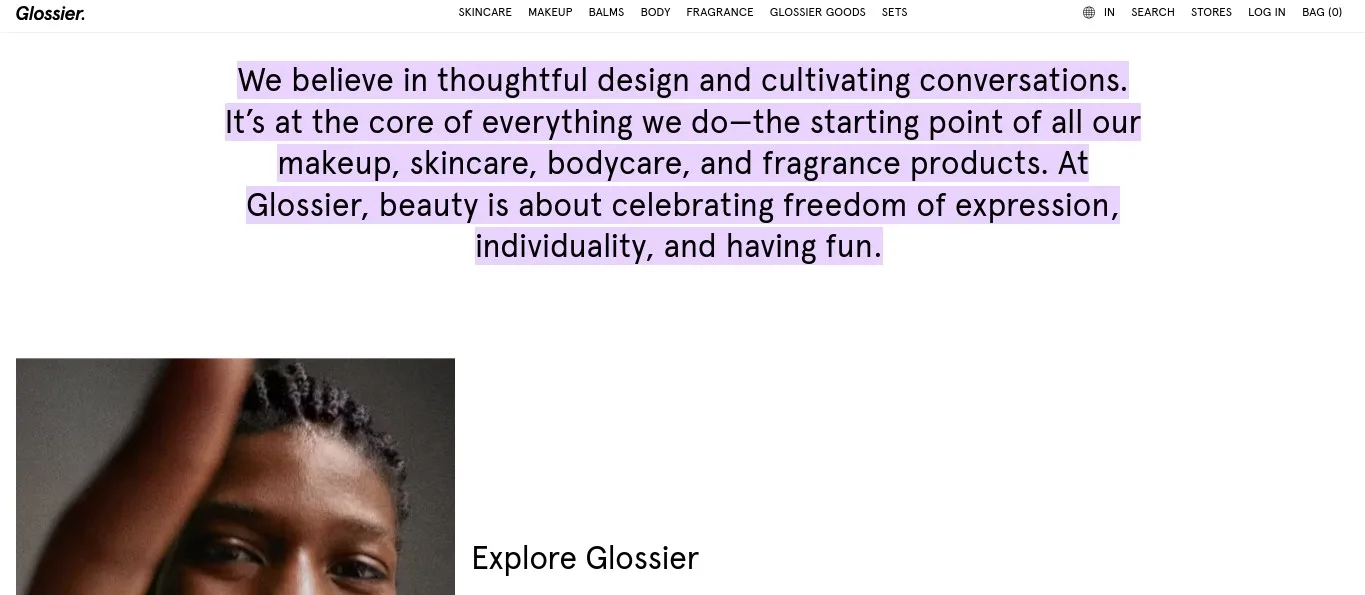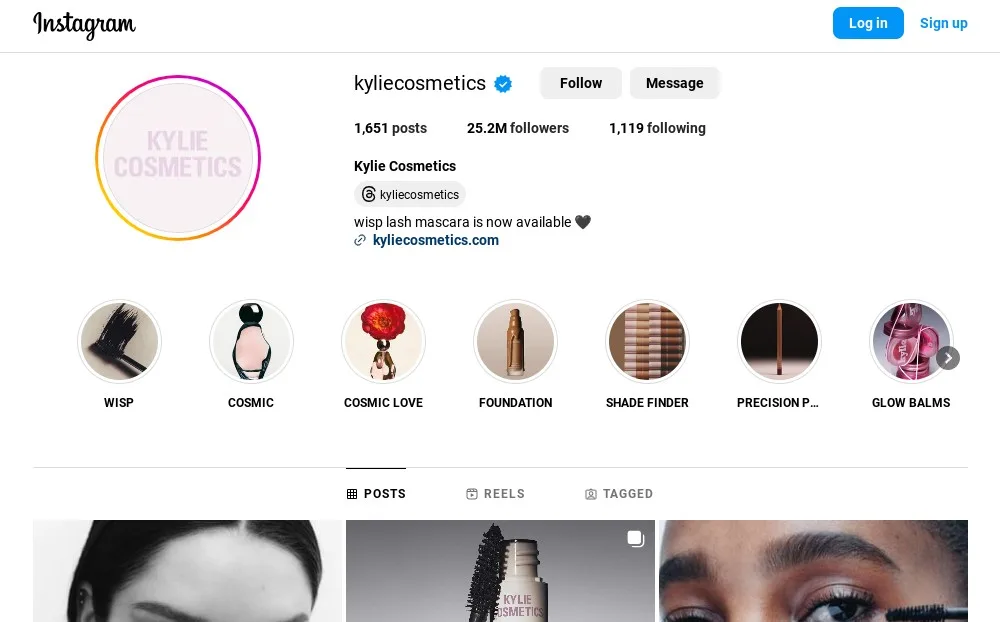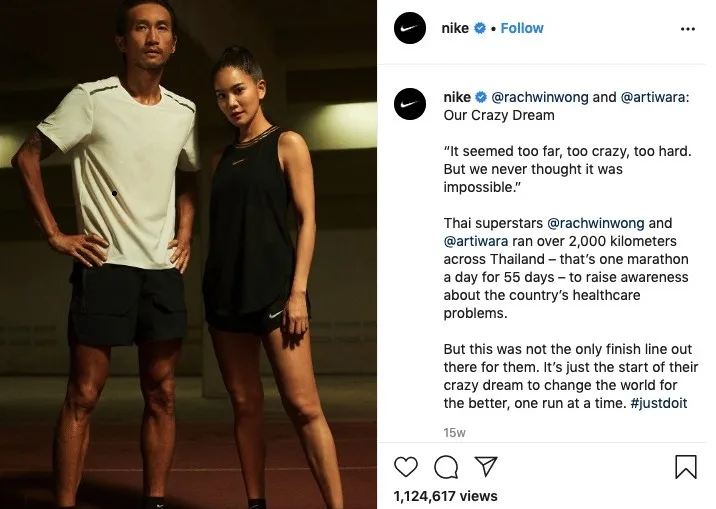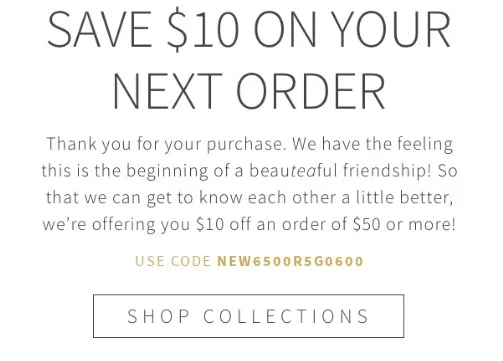
DTC, or Direct-to-consumer marketing, is an innovative and cost-effective selling practice adopted by online retailers since the 1990s. Under DTC marketing, businesses sell their products directly to consumers, skipping middlemen like wholesalers or retailers. DTC marketing is useful for: Here are some key stats worth mentioning about DTC selling: The rise of DTC has disrupted […]

DTC, or Direct-to-consumer marketing, is an innovative and cost-effective selling practice adopted by online retailers since the 1990s.
Under DTC marketing, businesses sell their products directly to consumers, skipping middlemen like wholesalers or retailers.
DTC marketing is useful for:
Here are some key stats worth mentioning about DTC selling:
The rise of DTC has disrupted traditional retail channels and empowered brands to forge stronger, more authentic connections with their consumers.
Let’s understand what DTC advertising is and how it can grow your business.
Direct-to-consumer is an online retail marketing tactic where goods are sold directly to the consumer.
With direct consumer reach, DTC companies are able to have a better control of the complete buyer journey.
By eliminating intermediaries, direct-to-consumer brands can better understand their customers’ preferences, customize their products and communication, and easily respond to changing market needs.
Therefore, DTC companies can frequently provide their products at reduced prices while still upholding profitable margins.
Also See: Full Digital Marketing Checklist For Startups
| Brand | Category | About the DTC Brand | Launch Date | Founder Name |
| Smile Makers | Personal Care | Designs high-quality, body-safe vibrators, lubricants, and wellness products. | 2014 | Emma Johnson |
| Dotti | Home | Creates modern, high-design cleaning tools for everyday use. | 2018 | Emily White |
| Kulfi Beauty | Beauty | Celebrates South Asian beauty with inclusive makeup products. | 2020 | Priyanka Ganjoo |
| ManiMe | Personal Care | Specializes in premium press-on nail kits for salon-quality manicures at home. | 2016 | Jessica Lee |
| Manly Bands | Lifestyle | Crafts unique and stylish men’s wedding bands. | 2015 | David Thompson |
| Velotric | Lifestyle | Provides innovative electric bikes for various lifestyles. | 2016 | Sarah Johnson |
| Cuyana | Lifestyle | Offers timeless, minimalist fashion designs with a focus on sustainability. | 2011 | Karla Gallardo |
| Aventon | Lifestyle | Offers stylish and high-performance e-bikes for urban commuting. | 2012 | Michael Evans |
| Lovevery | Baby Products | Designs and sells developmental toys and activities for babies and toddlers. | 2015 | Jessica Rolph |
| Oura | Health & Wellness | Produces wearable devices for sleep and activity tracking. | 2013 | Kari Kivelä |
| Logan Hollowell | Lifestyle | Crafts ethereal jewelry inspired by celestial wonders. | 2013 | Logan Hollowell |
| Day Out | Food | Offers protein balls to fuel busy schedules. | 2019 | John Smith |
| Dore | Personal Care | Reflects French beauty and style with safe and authentic products. | 2019 | Garance Doré |
| Matador Meggings | Apparel | Designs performance leggings for men’s activewear. | 2017 | Alex Rodriguez |
| Bonobos | Fashion | Known for its well-fitted men’s clothing and accessories. | 2007 | Andy Dunn |
| Allbirds | Footwear | Produces comfortable and sustainable footwear made from eco-friendly materials. | 2014 | Tim Brown |
| Stitchfix | Fashion | Offers personalized styling and clothing subscription services. | 2011 | Katrina Lake |
| The Blue Apron | Food | Provides meal kit delivery services with pre-portioned ingredients and recipes. | 2012 | Matt Salzberg |
| Chewy | Pet Supplies | Sells pet food, supplies, and medications online. | 2011 | Ryan Cohen |
| Warby Parker | Eyewear | Revolutionizes the eyewear industry with affordable and stylish glasses. | 2010 | Neil Blumenthal |
| Myntra | Fashion | Offers a wide range of fashion products online. | 2007 | Mukesh Bansal |
Also See: Lifecycle Marketing Guide To Reach Buyers Effectively
Successful DTC transition offers:
64% of consumers develop a strong bond with a brand when they have common values.
Don’t just design a universal logo and add it to several product pages. You must dedicate time and energy to develop a clear understanding of what your brand represents.
What is your distinct value proposition? What kind of image do you want to portray?
Glossier has found great success by engaging with millennial and Gen Z audience through thoughtful design and engaging conversations.

Refine your brand’s voice and make sure it remains consistently apparent in every interaction with your audience.
Take the time to establish and dedicate yourself to this level of brand identity to create familiarity, confidence, and devotion among your target buyers.
Audiences should start to see your products and content as part of a cohesive, meaningful experience rather than just a series of discrete transactions.
This people-first brand personality makes you memorable and differentiates you from countless other DTC players.
So invest smartly on the upfront branding work. It’s an investment that will pay dividends as you scale.
Also See: High-ROI Medical Spa Marketing Ideas For 2024
These days, if you are not working around on social media as a DTC brand, you are leaving behind untapped revenue potential that remains unexploited, representing missed opportunities for financial growth.
Instagram, TikTok, and Facebook, wherever your target audience is spending the most time scrolling and engaging, is where you need to be, too.
Do not make a basic profile either; you need to invest in crafting a robust, dynamic social media presence that becomes the core of your entire customer experience.
Develop platform-specific content strategies that don’t just push your product but spark genuine conversations. Follow the 80/20 rule of social media promotion and showcase your brand’s unique personality.
Craft bingeworthy, eye-catching videos that give people an inside look at your product creation process or show off good-quality user-generated content from happy customers, thoughtful, value-driven captions that position you as an authority and make people genuinely look forward to your next post.
Begin creative social media initiatives that encourage user participation and dissemination.
Kylie Jenner’s business, Kylie Cosmetics, had remarkable success because of its DTC strategy, which included efficient use of social media.

Through consistent social media postings of cosmetic tutorials, product launches, behind-the-scenes photos, and personal stories, Kylie Jenner cultivated a close relationship with her followers and fostered an environment of authenticity and relatability.
Kylie Cosmetics was able to interact with customers on a more personal level and avoid using traditional retail tactics by directly connecting with them, which fit in wonderfully with the DTC model.
The brands that are truly winning on social media in the DTC space are the ones that treat these platforms not just as sales channels but as vital relationship-building tools.
It’s about using that connection and interactivity to develop deep, authentic bonds with your audience to make them feel like part of an exclusive club rather than just faceless consumers.
That secret sauce translates to conversion rates, sky-high retention, and powerful word-of-mouth that fuels exponential growth.
Also See: Best Cosmetics Advertising Strategies
Aligning yourself with the right influencers can be an absolute game-changer.
82% of DTC brands use influencer marketing as a part of their overall marketing strategy.
Access the group of individuals who have built dedicated and interested followers that match your desired audience through their unique personalities.
Having micro-influencers with dedicated followings in a certain niche, industry experts, or loyal brand advocates promoting your products authentically can introduce you to a broader audience of potential customers.
Finding influencers with personal brands, values, and audiences that align with yours is crucial.

That way, when they start creating content that showcases your offerings, it feels like a natural, trusted recommendation rather than just another plug.
Their followers are likelier to engage, convert, and become loyal customers.
You can then leverage that influencer content and social proof across your channels, further amplifying your reach.
It’s all about leveraging those influential relationships to borrow equity, credibility, and audience access that you’d otherwise have to spend tons of time and money trying to build from scratch.
So get creative and start forging powerful partnerships with the right personalities who can move the needle for your DTC brand.
The ROI on strategic influencer collaborations in this space is unmatched.
Also See: Marketing Psychology in Hospitality
In the world of DTC brands, your ecommerce experience is the make-or-break moment where you either turn window shoppers into customers or watch them bounce off your site and go straight to your competitors.
That’s why making sure your audience’s online shopping journey is as smooth, seamless, and high-converting as humanly possible needs to be an absolute top priority.
Craft a website that doesn’t just look visually nice but is also hyper-intuitive to navigate, with
features like real-time inventory updates, clear product details, frictionless checkout flow and eliminate potential speed bumps.
You want people to find exactly what they are looking for easily, add it to their cart, and complete their purchase without any problems.
You must regularly monitor your website’s performance metrics, user behaviors, and conversion data in order to find opportunities for ongoing enhancement, rather than just making a one-time optimization.
A/B test new layout ideas, work on your CTAs, and further streamline that checkout process.
To keep enhancing the customer experience, remove any remaining barriers between your target audience and convert them into paying buyers.
Your e-commerce presence is ultimately the digital storefront that represents your entire DTC brand.
If it doesn’t nail the seamless, high-converting shopping journey, you are leaving a ton of potential revenue on the table.
So, invest the time, money, and resources to dial in the user experience to perfection.
To enhance your DTC marketing, avoid relying solely on assumptions about your audience.
Data-driven organizations are 23 times more probable to acquire customers.
If you want to find useful customer insights, you have to look at the hard data and analytics.
Use advanced tools that give you a good view of your buyers’ behaviors, preferences, pain points, and everything in between. Use that data to get specific with audience segmentation.
Carve your customer base into specific targets based on every relevant demographic, psychographic, and interaction data point you can find.
Then, you can start crafting and deploying personalized marketing strategies tailored to each segment’s unique needs and pain points.
It can be custom product recommendations, hyper-relevant email flows, and platform-specific social content that makes your customers feel understood and valued individually.
Data-driven insights should also inform all your high-level business decisions, product roadmaps, and growth strategies.
A deep, evidence-based understanding of your audience unlocks your ability to make calculated, data-driven moves that consistently profit you.
Make systematic, targeted execution that fuels sustainable, scalable growth for your DTC brand.
Also See: 124 New Inbound Marketing Stats For 2024
Do you want to know what recently made huge profits for many direct-to-consumer brands? The answer is subscription-based business models.
Instead of just hoping customers will randomly reorder from you whenever they need a refill or want to try something new, you can lock them into a consistent, recurring revenue stream with convenient and customized product deliveries.
It’s a win-win situation that fosters serious loyalty while giving you predictability in your revenue.
The key is being strategic and creative with how you structure the subscription tiers and bundles.
For example, you can offer a base-level plan that sends customers their favorite core products on a set schedule.

Then you can offer upgraded tiers that let customers personalize their shipments with add-ons, limited-edition drops, or complementary items tailored to their specific needs and preferences.
You can also experiment with different billing cycles, delivery frequencies, and bonus perks to see what resonates best with your target audience.
The subscription experience must feel valuable, convenient, and tailored to each customer. Otherwise, you risk losing their interest.
That’s where all that customer data and segmentation comes into play.
Use that intel to architect subscription models that anticipate your buyers’ evolving needs and make their lives easier.
This will attract loyal, long-term customers who will put your D2DTC C brand on auto-pilot.
It takes a lot of upfront work to dial in the mechanics and logistics, but a good subscription program is one of the most powerful revenue streams a direct-to-consumer company can have.
Your average consumer doesn’t just interact with brands through a single channel. They hop across your website, social media, email campaigns, and even your physical retail stores.
And what do they expect? A seamless, cohesive brand experience no matter where they are engaging with you.
That means ensuring your core identity, messaging, and overall user experience remain rock solid and consistent across every single one of the customer touchpoints.
A DTC eyeglasses company, Warby Parker offers customers a consistent brand experience at every touchpoint by being consistent throughout its website, mobile app, physical retail stores, and social media channels.

Your website should have the same cohesive feel as the email newsletter customers received or the Instagram reel they saw.
For your customers to feel appreciated and cared for, your visual aesthetics, tone of voice, and general personality must all come together to form an integrated, omnichannel ecosystem.
Building trust, loyalty, and lifetime value with your audience can be greatly facilitated by achieving that degree of brand consistency and omnichannel polish.
They start seeing you as a seamless, holistic experience rather than a disjointed collection of marketing channels, which translates to higher engagement, better conversion rates, and, most importantly, customers who keep coming back repeatedly because the experience feels personalized and elevated.
It’s a big investment of time and resources to get your omnichannel marketing plan to work right. But for any DTC brand that wants to stand out and scale, it’s an essential piece of the puzzle.
The new plan should be “a consistent brand and consistent experience”.
While acquiring new customers is crucial, retaining and nurturing the existing ones is often more profitable in the long run.
According to a Harvard Business School survey, a 5% increase in DTC retention could lead to 25% more profits.
To maintain a loyal and interested consumer base for your business, implement loyalty programs, personalized post-purchase experiences, and targeted retention campaigns.

It can cost you five, ten, or even twenty times as much to acquire a new customer as it does to keep an existing one.
For this reason, savvy DTC businesses place a high priority on customer retention, devoting equal amounts of effort to cultivating long-term connections and generating fresh leads.
Loyalty programs, customized post-purchase interactions, and hyper-targeted retention campaigns that help your customers feel valued and invested in your brand can help you achieve this.
Involve subscription models that keep customers on auto-refill, VIP membership tiers with exclusive benefits, and personalized product recommendations based on their purchasing patterns and past purchases.
One of the best examples of a successful VIP membership program is Sephora’s Beauty Insider initiative.
With each purchase, consumers earn loyalty bonuses that can be exchanged for benefits like samples, limited-edition products, and first access to sales.
Sephora provides a number of membership categories, with higher tiers opening up further advantages including free shipping, invitation-only events, and one-on-one beauty consultations.

Create an environment of convenience, excitement, and belonging that makes them look forward to their next order.
It is not just about offering deals and rewards; you have to customize the ongoing brand experience for each individual.
Personalize email flows, social media interactions, and customer service touchpoints.
Everything has to scream, “we see you and we value you,” in a way that your competitors can’t replicate.
When people feel heard, understood, and catered to at every step, you unlock loyal, high-lifetime-value customers.
You will always need new business to fuel growth. However, retention is the real profit and sustainability, and that should be a top strategic priority for any scaling DTC brand.
Through enhancing their online visibility, DTC businesses can greatly increase their exposure and draw in natural traffic from search engines.
This involves optimizing their website, creating engaging content, and strategically incorporating appropriate keywords to improve their search ranking.
Aside from increasing website visits, SEO also establishes credibility and trust with potential clients, as top search rankings indicate authority and dependability.
In contrast to paid advertising, SEO provides a budget-friendly way to sustain a consistent flow of specific visitors in the long term.
Having a strong understanding of local SEO can provide brands with a vital advantage, enabling them to establish a significant presence in the digital world and ultimately achieve growth and success.
Just having an attractive website and successful social media interaction is insufficient.
To truly capture your audience’s attention and differentiate yourself, you must move past conventional e-commerce and adopt immersive, memorable brand encounters.
Begin with retail events where customers can have hands-on experiences with your products and understand your brand’s identity, or organize special online activities like live product demonstrations, virtual try-on gatherings, and interactive webinars featuring industry professionals.
Airbnb has organized various exclusive “Night At” experiences, giving winners the chance to stay overnight in exceptional places such as an Olympic bobsled track, the Louvre museum, and even a submarine.
These unique and engaging experiences form enduring memories and forge a deep emotional bond with the Airbnb brand.

The important thing is to be extremely innovative and take advantage of chances to develop touchpoints that express your brand in surprising and enjoyable ways.
Allow individuals the opportunity to interact with you on a more profound level rather than simply scrolling and clicking passively.
Also See: The Ultimate Guide to Data-Driven Marketing

The more you can evoke in them the sense of being a part of an exclusive VIP experience, the more likely it is that they will feel a connection to your brand and its narrative.
Although it takes more time and money up front to implement these kinds of experiential marketing efforts, the results are worthwhile.
As a result, your customer base will be more engaged, devoted, and ready to spread the word about your business.
PPC (Pay-Per-Click) advertising is essential to DTC campaigns because it offers precise targeting and immediate visibility.
By running advertisements on websites like Google Ads and social media, DTC companies can reach their target demographic and draw in potential customers who are actively seeking for products or who share similar interests.
PPC’s primary benefit is its flexibility, which allows marketers to instantly modify campaigns based on user behavior and performance data.
DTC businesses can optimize their PPC campaigns to increase traffic, boost conversions, and eventually increase income by carefully selecting and arranging their adverts.
Through the use of interactive marketing, direct-to-consumer companies can maximize their advertising budgets and get tangible results in a competitive online marketplace.
Also See: Google Ads Remarketing Guide
The direct-to-consumer market is rapidly changing due to new strategies, technological breakthroughs, and shifting customer behavior.
Fostering a culture of curiosity, creativity, and agility within your team is critical to staying ahead of the curve in your sector and continuing to expand in the future.
This is to inspire you and your team to look for fresh chances all the time, including untapped audience groups, unique content formats, or social media platforms that are just getting started.
Offer the necessary tools for them to try, experiment with fresh concepts, and rapidly make changes based on the outcomes.
Create a space where individuals are encouraged to take strategic risks, question the current norms, and introduce creative ideas.
In this highly competitive DTC sector, the brands that succeed are those that can rapidly adjust to changing circumstances.
Be prepared to completely revamp your strategies, technologies, and business models.
Companies that are open, flexible, and proactively seeking what is next will outpace the competition and dominate the market.
Foster the culture of innovation as a top priority. Resource it, incentivize it and make it a core part of your company’s DNA.
Successful DTC advertising depends on your ability to embrace innovation, give top priority to customer-centric initiatives, and cultivate honest connections with our target audience.
By putting this thorough DTC marketing guide into practice, you can put yourself in a good position to grow your company, gain a loyal customer base, and thrive in the market of 2024 and beyond.


